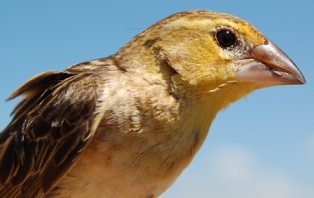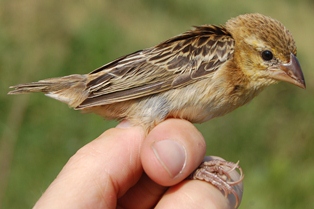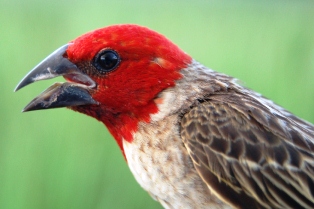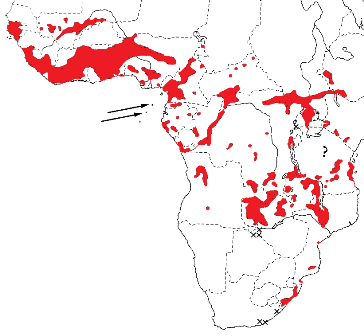Weaver Wednesday [49]: Red-headed Quelea 2013-02-22 (368)
 Weaver Wednesday
Weaver Wednesday



The Red-headed Quelea Quelea erythrops is a small weaver found in scattered localities through Africa. The male in breeding plumage has a bright red head, closely resembling the Cardinal Quelea Q. cardinalis but the Red-headed Quelea has the red of its head continuing onto the nape but not onto the breast, and has black barring on the throat. The female is very similar to the female Cardinal Quelea, with a yellowish face and supercilium, but has a white throat, short dark moustachial mark, slightly larger and paler bill, but is probably not safely distinguishable in the field. The non-breeding male retains some red on the head. Read more about its identification in South Africa here.

The Red-headed Quelea occurs widely through sub-Saharan Africa (see map left, based on Birds of Africa). Two races have been proposed previously, Q. e. erythrops in the north and Q. e. viniceps in the south, but the species is treated as monotypic currently. Morphological differences between these races are slight, but there may be differences in the timing of moult, migrations and breeding in the two regions which suggests separation with minimal interchange between these populations.
The Red-headed Quelea inhabits rank grass near water, tall grassland, farmland and rice fields. It is highly gregarious, often in flocks of over 1000. Small groups join mixed-species flocks of weavers. Flocks are restless, some birds feeding on the ground, and others perching in bushes.
Their diet consists of grass seeds, and insects. Rice is taken, and it may be a pest in some areas. Nestlings are fed on insects.
This species is migratory but few recaptures or recoveries have been reported. The greatest movement to date is at least 475 km and the details of this record may be seen here.

The Red-headed Quelea is probably polygynous. They are colonial, with several hundred nests close together. The largest colonies consist of 3000-5000 nests. Breeding is highly synchronized. Males may leave the colony before the young fledge. Colonies are seldom at same site in successive years.
 The nest is a tightly-woven dome with a side entrance, built from very narrow strips of grass. The entrance is oblong, without a porch, but with a small platform on the lower lip. The nest is not lined, and is suspended between 2 grass stems, above water in reeds. Males and females have been recorded as building nests.
The nest is a tightly-woven dome with a side entrance, built from very narrow strips of grass. The entrance is oblong, without a porch, but with a small platform on the lower lip. The nest is not lined, and is suspended between 2 grass stems, above water in reeds. Males and females have been recorded as building nests.
The Red-headed Quelea has 2 PHOWN records, both from South Africa. Many more PHOWN records are needed for this locally common species (see PHOWN summary). Submit any weaver nest records to PHOWN (PHOtos of Weaver Nests) via the Virtual Museum upload site.
PHOWN summary
Previous Wedn: Vitelline Masked Weaver
Full weaver species list
| 

 Weaver Watch
Weaver Watch


